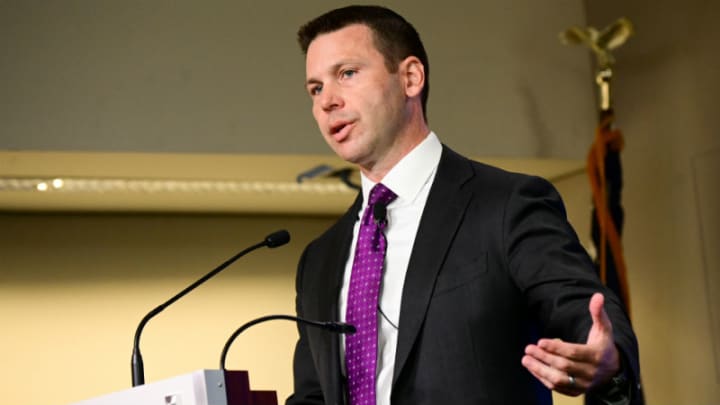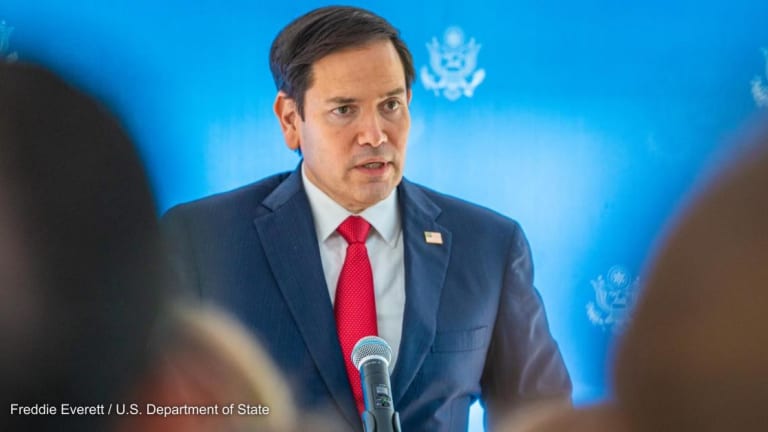
WASHINGTON — Due to “leadership commitment” from Central American governments in response to the migration crisis, the Trump administration is looking at ways to resume some foreign assistance to El Salvador, Honduras, and Guatemala, U.S. Department of Homeland Security Secretary Kevin McAleenan said Monday.
“I’m seeing a real sense of ownership, of innovation — which is new, frankly, in the last year from the region. So what we can do then is look at how do we restart aid programs that are working, that are supporting our interests,” McAleenan said, noting that programs funded by the Department of Homeland Security and Department of Justice have already “been turned back on” in the three Northern Triangle countries.
Speaking at an event in Washington, McAleenan said the Trump administration has found willing partners to stem migration in both the outgoing and incoming administrations in Guatemala, where the new president will take office in January, as well as in Honduran President Juan Orlando Hernandez and new Salvadoran President Nayib Bukele. “International partnerships” based on “shared responsibility” with source countries are essential to solving the migration crisis, McAleenan said.
Frustration over continued flows to the U.S. southern border led U.S. President Donald Trump to cut off all U.S. aid to the Northern Triangle in March, directing some funds to other projects. Secretary of State Mike Pompeo said that resumption of U.S. funds would be conditional, but the Trump administration hasn’t provided concrete criteria that Northern Triangle governments must meet in order to see foreign assistance resume.
“The next step is to look at which of those aid programs are really helping on the economic side and helping reduce migration. Which of the International Narcotics and Law Enforcement Bureau operations are really critical to the capacity building for governments in reducing crime and violence that are helping drive this in communities?” McAleenan said. “I think that’s the process we’re undertaking right now. ”
On Friday, McAleenan signed a “protection cooperation agreement” with El Salvador, the second such bilateral agreement signed with a Northern Triangle country. While details about what’s in the agreement and what implementation will look like remain vague, it will “enhance collaboration on building protection capacity and increase protection options closer to home for vulnerable populations,” according to a joint statement by the governments of the U.S. and El Salvador.
The Salvadoran document is not a safe third-country agreement, such as the agreement the U.S. signed with Guatemala in July that requires any person passing through that country to first seek asylum there. The U.S. will provide “tens of millions of dollars of funding” to support UNHCR and Guatemalan efforts to strengthen the country’s protection system, McAleenan said.
The Homeland Security secretary said that 80% of people arriving in the U.S. have to transit Guatemala, while a “negligible” amount pass through El Salvador due to the region’s geography.
“It’s a different structure and situation in terms of how we collaborate on asylum. Guatemala has a functioning asylum process, they are granting asylum. It’s nascent, it needs to be further developed,” McAleenan said. “We see a similar but a smaller scale effort with El Salvador to support them in their own decision to join the U.N. High Commissioner for Refugees MIRPS program in Latin America.”
MIRPS is Central America’s regional implementation of the Global Compact for Refugees that seeks to address forced displacement. Through the framework, UNHCR and the Organization for American States facilitate intergovernmental coordination around asylum and protection efforts and solving the root causes of forced displacement.
“But it’s really to show that this is a shared responsibility regionally, that there is access to protections if you’re being persecuted for the core conditions of asylum — political, racial, religious, membership in a social group,” McAleenan said. “So we want to meet each partner where they are and each would be operationally very different in application.”




